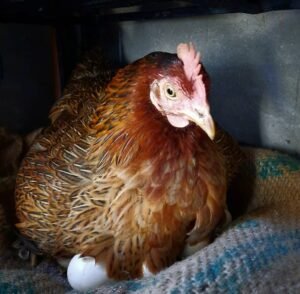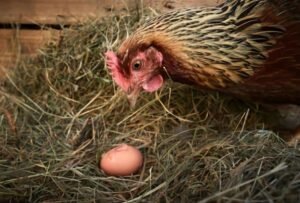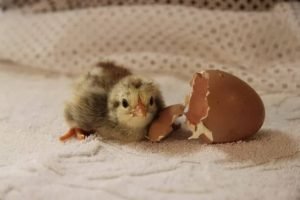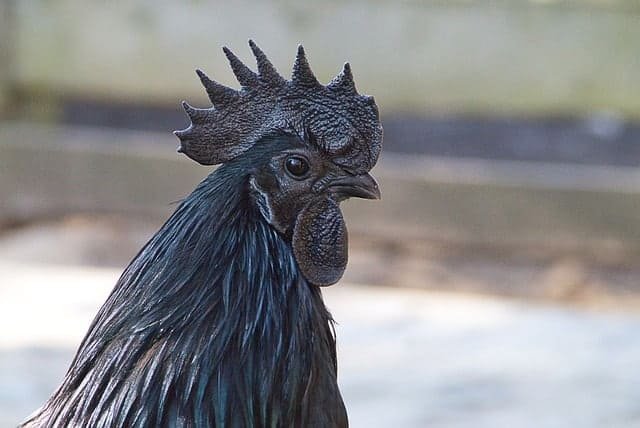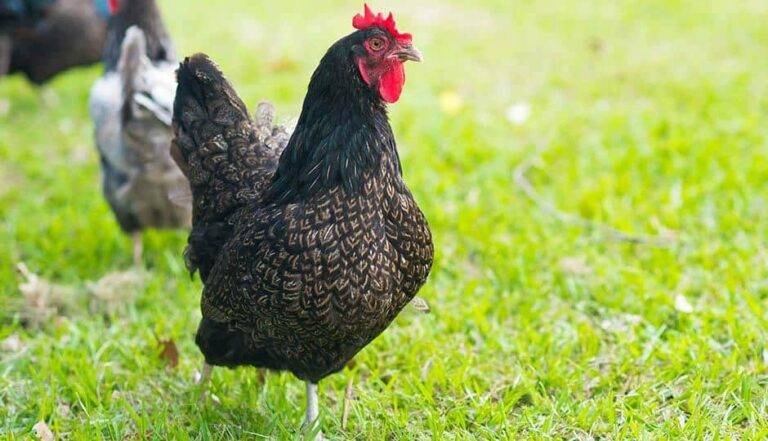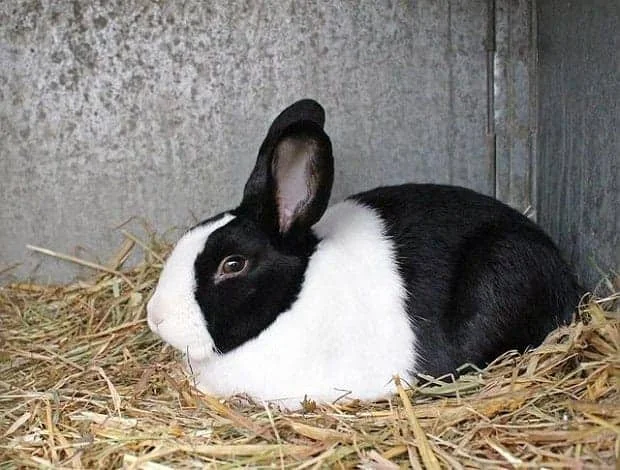Polish Chicken – Characteristics, Origin, Breed Info and Lifespan

Have you ever met a chicken with good looks? I bet you’ve not. This article brings you all you need to know about the Polish Chickens.
Many call it the “chickenistas”
These are the best ornamental birds for fashion shows.
In this guide, you will find out about the polish chickens egg-laying capabilities, recognized varieties, and also how to care for them.
What is a Polish chicken?
A Polish chicken is a unique beautiful ornamental bird with a remarkable crest of feathers.
Basically, they are kept for fashion chicken shows.
However, out in the yard, they make a great family chicken.
Their head feathers are a head turner and a fashion statement for all and sundry.
You can easily differentiate them from the other breeds.
They’re not prolific egg layers but this quirky bird is sure to bring a smile to your face when you see them!
What is the origin and history of Polish chickens?
Here’s another chicken breed whose origin is unclear.
But some theories speculate that during medieval times, its ancestors were brought by Asian Mongols to Central and Eastern Europe.
In that regard, many believe that the Polish chickens originated from Poland. Hence, the name Polish.
Some say its name could have also come from “Pol head” a Middle Dutch word.
In the 15th century, chickens bearing a strong resemblance to the Polish were seen in Dutch and Italian paintings.
They were extensively portrayed throughout the 16th through the 18th centuries.
It was in the 16th century that Polish chickens were accepted in the Netherlands.
Also, it was in the Netherlands that this chicken breed was standardized and declared a thoroughbred.
Between the 1830s and 1840s, the breed was introduced to America.
The American Poultry Association in 1874, accepted three varieties of Polish chickens into the American Poultry Association’s Standard of Perfection.
Also, other additional varieties were accepted in 1883, 1938 and 1963.
During a certain period, the Polish breeds favoured most American farmers and chicken fanciers.

What are the characteristics of Polish chickens?
The Polish chickens do not quite have a resemblance with other chicken breeds.
Just like the Naked Neck chickens come with a specified look, the polish chicken breeds are defined differently.
They possess this look that makes them easy to spot. Below are the defining features of the Polish chickens;
1. Polish chickens have a V-shaped comb:
Most chickens either have a rose or a single comb.
But when it comes to the Polish chicken breed, the case is unique.
Usually, the red combs of this chicken breed are V-shaped and really small.
Also, it’s not visible on the first look because it is covered by the large crest of feathers.
2. They possess a unique small earlobe and wattles:
Unlike most chickens, the Polish have a white earlobe. The wattles on the other hand are bright red in colour.
Both are often hidden by the fluffy crest and beard.
3. The Polish are show birds:
These birds look very fanciful.
Their looks make them the perfect candidate for exhibitions and show-offs.
4. Do not count on them to go broody:
Their fancy nature makes them walk on air. The kind of high-class ladies that can’t hold a baby.
These birds do not make good mothers.
5. These breeds have a pretty hairdo:
The Polish birds have this hairdo that looks like those from the 1870s.
Although their hair looks unkempt and untidy, it’s their selling point in exhibitions.
Their head feathers grow up and then cascade over their head and faces.
Sometimes, it causes visual problems.
6. The Polish birds do not have a feathered foot:
Unlike the frizzle chickens, the polish breeds do not have any feathers on their foot.
Their legs are coloured grey.
Each foot has four toes.
7. Usually, they weigh between 4-6 pounds:
The roosters can weigh about 6 pounds while the hen clocks about 4½ pounds.
8. The Polish birds are nervous and flighty:
They easily get startled. This can be attributed to the bird’s head feathers’ visual problems.
Because they can’t see well, they react to every move and noise.
This makes them take a flight to avoid any impending danger.
Therefore, talking or whistling when approaching the birds will alert them that you are coming.
9. Polishes’ are great foragers:
If the head feathers are trimmed, the polish chicken will be able to see and put their good ranging ability to work.
They can source their food if they can see well.
10. These birds are hardy birds:
You can count on the Polish chickens to tolerate most climates well.
But, they do not handle the rainy season well.
When they get wet, they can freeze and get cold.
Many breeders move their flocks into a draft-proofed building during winter.
If you live in a cold climate, it’s best to keep the Polish birds inside during the severely cold months.
11. Sometimes they need to visit the barber’s shop:
Yes, this is one of the chicken breeds that need trimming once in a while.
To help the birds see, it’s advisable to trim the feathers that impede vision.
Also, this will help them spot predators and generally improve the wellbeing of the bird.
If your Polish chicken is going for a show or exhibit, cutting the feathers will not be a good idea during show seasons.
Table summarizing the Polish breed information
| Skin colour | White |
| Egg colour | White |
| Comb type | Duplex |
| Setter/Broody | No |
| Especially Docile | Yes |
| Use | Exhibition Show |
| Cold Hardiness | Hardy in winter |
| Conservation status | On the watch |
| Heat Tolerance | Tolerates heat very well |
| Also Known As | PolandPaduanTophats |
| Personality | Calm, inquisitive, active, docile and flighty |
| Country of origin | Not specified but traces tend towards Poland. |
| Standard | Polish chickens |
| Bears Confinement | Bears confinement well |
| Weight | Male: 2.75 kgFemale: 2 kg |
| Varieties | Frizzle Non-bearded white crested black; golden; silver; white. Bearded golden; silver; white; buff laced. Non-bearded buff laced. Non-bearded white crested blue. |
Why choose Polish chickens?
Will polish hens and roosters be a good addition to the flock?
What do these guys bring to the table? Why choose them?
If you’re considering the above questions then you have to take your time and read through this section.
Below you will find why this chicken breed will just be a good fit for you;
1. They are best for exhibitions:
If you’re looking for a chicken breed to sign up for shows and exhibitions, then the Polish is a good option.
These chicken breeds shine in the show or exhibition area. Basically, they do well in local agricultural shows and top poultry shows.
If signed up for an exhibition, the Polish will attract many comments.
2. For a show bird, they are inexpensive:
Most show birds are very expensive.
But the Polish breed is quite inexpensive. To buy them wouldn’t cost you as much as it would for a show bird.
3. The Polish are ideal for pets:
With their very fanciful looks and gracious nature, they make good lap birds.
Also, they have a gentle disposition and children seem to be attracted to them.
4. The Polish birds are Non-aggressive:
If you’re looking for birds who do not have temper tantrums, then the Polish birds are ideal for you.
Having them as a flock will make the environment calm. This makes them good for suburban regions.
5. They bear confinement well:
Unlike the Leghorn chickens who will always fly and make abode on nearby trees, the Polish breeds can stay indoors.
You can count on them to stay in the pen.
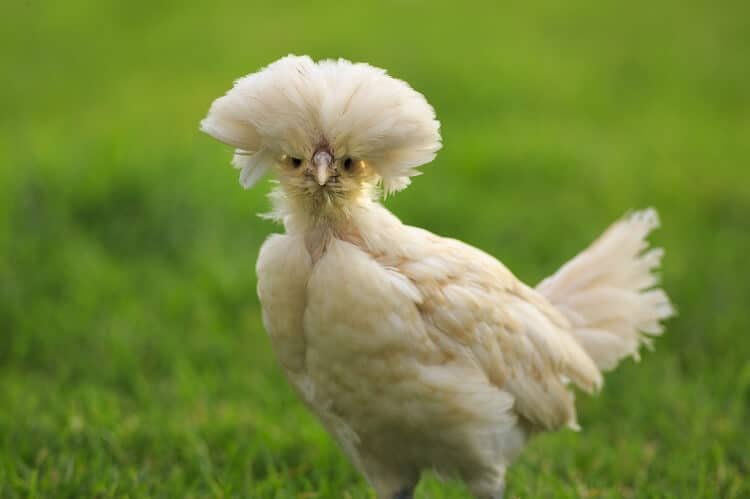
What are the disadvantages of having Polish Chickens?
Although the ornamental Polish chicken is best in some cases, handling it can be a daunting task.
Therefore, we bring you some considerations to look into before purchasing this breed.
1. Preparing the Polish birds for shows is a hard task:
These very ornamental birds take time to get set for shows. You can relate it to preparing a bride for her wedding.
Although some local shows can ignore their unkempt looks sometimes, top shows won’t let them in if they’re not well looking.
So, dressing up this bird for shows will be easier if you love fashion and have patience.
2. Their fluffy head feathers can make them susceptible to cold:
Although the Polish head feathers are a huge attraction, they can be a big issue.
If the hard feathers get wet and freeze, the birds can easily catch a cold.
This can be a problem for the flock.
3. The Polish birds usually get bullied:
If your flock is packed with aggressive breeds such as the Rhode Islands, Welsummers’ etc., the Polish will be picked on.
Because they are docile birds, they tend to be low in the pecking order.
Other angry birds in the flock can pull all the beautiful head feathers of Polish chickens.
I guess they’re jealous of it!!!
4. They’re not cut out for the free ranging life:
Their furry hairstyles come with some level of visual impairment.
This makes it pretty hard for them to see.
And because of that, they are not equipped for free-ranging.
This in turn suggests that they will eat lots of feed because they can’t go sourcing for one themselves.
5. The Polish chickens’ head feathers are prone to lice:
As furry and full as the head feathers are, they’re prone to mites and lice infestations.
In that regard, the hens should be checked regularly to avoid more problems.
6. They can easily die from pecks as chicks:
The Polish chicks should be kept under close surveillance to avoid massive deaths.
The bony head prominence takes some time to knit together.
When this is not fully formed and the chicks are pecked on that region, they could die or get seriously injured.
Therefore, this calls for constant checkups. Or raising them alone in a different pen.
Frequently Asked Questions About Polish chickens
1. What is the lifespan of Polish chickens?
Polish chickens tend to live about 8+ years.
Unless they are affected by frostbite, mice infestations etc, they can live longer than the estimated lifespan.
2. Are Polish chickens good for meat?
No, they are not.
Because they are chiefly ornamental birds, they are trained and feather mostly for fashion exhibits.
Their slender looking nature makes them non-fleshy and lean.
Although their meat is whitish in colour, they do not make good table food for the family.
3. Can Polish chickens be trained as pets?
Yes, they do.
Children seem to be drawn by the gentle, calm and docile disposition.
They can be cuddled and held close.
Their furry head is a good point to stroke with your hands.
They often cry when they get separated from their owners and cannot see the others.
Also, they can respond to calls. So, you can rest assured that if you give them a name like “Sally”, they will answer you when you call.
4. Are Polish chickens good egg layers?
The Polish hens were known to be excellent egg producers in France. But today, we can say they are just fair layers.
Also, their egg production can be dependent on the breed.
If you want a reliable daily egg layer, we recommend you go for the Isa Brown chickens or the Australorps.
5. How often do Polish chickens lay eggs?
Because they are not good egg layers, they do not lay much in a year.
They lay about 2 to 4 eggs in a week. This is really poor for the farmer expecting more eggs.
On the average scale, the Polish hens lay about 150 eggs in a year.
Their eggs are usually medium-sized and white in colour.
So, if you want an egg-laying machine – the Polish is not it!
6. What do Polish chickens eat to grow big?
A regular 16% protein feed is good for adult Polish chickens during the laying season.
But when they are molting, a 20% protein feed will be best.
They should feed on this until most of their feathers have been replaced.
You can also allow them to forage for mice and rats if their hairdo is trimmed.
But from a general perspective, they do not grow larger than their actual weight.
7. How fast do Polish chickens grow?
Usually, they grow like the other birds.
But their bony head prominence takes quite some time to knit together.
8. Are Polish chickens noisy?
Except for their reactions when they sense someone coming, they’re naturally calm birds.
They do not disturb the neighbourhood with chucklings and loud conversations just like the Rhode Island Red.
9. What is the habitat and environment of Polish chickens?
First, you must know that Polish birds do not thrive well in a wet environment.
The Polish chicken coop will need at least 4 square feet each on the inside.
A large area to roam about will be a great addition.
Also, a standard 8 inches space will be good for roosting.
For their nesting box, it should be about 12×12 inches.
Conclusion
The polish chickens make a good addition to the farm if what you need is an ornamental bird.
They can win many trophies for the farm from different exhibits as long as they are trimmed “beautiful”.
Although they can be flighty, they are a great conversation starter for those looking to decorate their flock with this ornamental breed.
References:
- 12 Best Chicken breeds for Eggs – chicken breeds for eggs
- When Do Chickens Start Laying Eggs Regularly?
- How Many Eggs Does A Chicken Lay In A Week?
- Fermenting chicken feed – The definitive guide
- 10 Sure Ways To Stop Chickens from Eating Their Eggs [+Bonus]
- 6 Best Chicken Egg Incubators for Chicken Eggs and Other Birds
